|
Milano, Italy is a beautiful city with a lot of monuments, art museums, and university campuses. Here, I start with some of the fascinating research underway at Università degli Studi di Milano and University of Milano-Bicocca, then I finish with a trip to Fondazione Prada Art Museum and The Palazzo Reale.
Andrea Schievano is the principal investigator of the laboratory at Università degli Studi di Milano. Most of his lab was in attendance at EU-ISMET. He is primarily focused on using microbial electrochemical cells (MxCs) for monitoring of wastewater and for eletrofermentation. To use MxCs to monitor wastewater, theoretically, all one has to do is record the current produced by the bacteria living on the anode. As described in the Science section, the bacteria in MxCs essentially breathe the anode. What this means is that every time the bacteria consume organic waste in the water, they pass electrons onto the anode and produce a current. Thus, if wastewater has a lot of organic waste (measured in chemical oxygen demand or COD), then the signal should get very large. And if the wastewater has very little organic waste, the signal should be very small. Therefore, by measuring current over time (Chronoamperometry), we should be able to monitor the amount of organic waste, or COD, in a given waste stream. This is important because how COD a factory, production plant, or wastewater treatment plant releases into the environment is highly regulated and thus needs to be tightly monitored.
Electrofermentation is the process of combining MxCs with the fermentation process to enhance the production of useful materials. First, let me break down fermentation. When we poop, for example, our solids go into a sewer and eventually reach a wastewater treatment plant. After traversing the wastewater treatment plant, any solids that are left often are sent to an anaerobic digester. An anaerobic digester is usually a large enclosed container in which fermentation happens. Fermentation is the process of taking electrons from molecules, using them to generate energy for the cell, and then passing those electrons, at lower energy, back to smaller molecules. Thus, in the context of wastewater treatment, fermentation is the process of converting poop into smaller products like methane and carbon dioxide. An example that may be a little more relatable to you is micro-brewing. To brew beer, yeast take electrons from sugar, use the electrons to grow, and then put the electrons onto ethanol. Other microorganisms can also ferment sugar to produce acetic acid- this is why contaminated beer may taste a little like vinegar. Nevertheless, fermentation is used to process large molecules into smaller molecules in order to develop certain desirable end products from otherwise undesirable inputs.
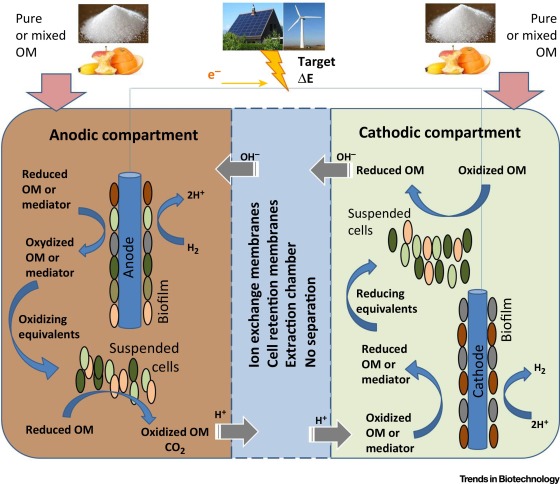
Schievano et al. 2016. Technical stuff from the paper as an fyi for those interested. "Possible Anodic and Cathodic Mechanisms. At the anode, microorganisms utilize the solid conductor as a favorable electron acceptor during the oxidation of organic molecules (OM). In traditional oxidative fermentations, the lack of favorable electron sinks inhibits catabolic reactions towards target products, leading to partial formation of metabolites with different oxidation states. If this reducing power is efficiently consumed by an electron sink (solid conductor), the fermentation could be driven more homogeneously to a particular product. OM can be reduced at the cathode, where microorganisms utilize the solid conductor as a favorable electron donor and a chemical species as an electron acceptor. The supply of additional reducing equivalents can enhance target reductive pathways in particular metabolic steps, such as chain elongation of carboxylates or alcohols. H2/H+ and other mediators can be utilized as electron shuttles to enhance oxidative/reductive fermentations of suspended microbial populations. This strategy could also substantially modify the environmental conditions (redox balance, pH, etc.), thus stimulating cell growth and concentration in the bulk. Anodic microbiota-driven oxidations of secondary organic matter (e.g., waste, wastewater) can be the source of electrons to be transferred to a sterile cathodic compartment where pure microbial cultures (PMCs) can efficiently catalyze reductive bioconversions. Anodic and cathodic environments might either coexist or be separated with specific ionic exchange membranes, micro/ultrafiltration septa for microbial cell retention, or other porous media. The extraction of target metabolites can be integrated into the process. Charged anions (e.g., carboxylates) can be continuously drawn through anionic exchange membranes by electro-osmotic forces between the fermentation broth and separate chambers."
With electrofermentation, we use an electrode to stimulate fermentation to produce more valuable end products. For example, say we wanted to produce a higher quantity of ethanol from glucose in a shorter amount of time- we may be able to do that with electrofermentation. The lab at Università degli Studi di Milano is not necessarily interested in producing ethanol to make stronger beer. Rather, they are interested in using electrofermentation to produce biofuels, biopolymers, biosolvents, food additives, pharmaceuticals, or potentially building blocks for other materials. You may remember many of the people that are working on this project from my blog including: Sebastià Puig, Korneel Rabaey, and Deepak Pant.
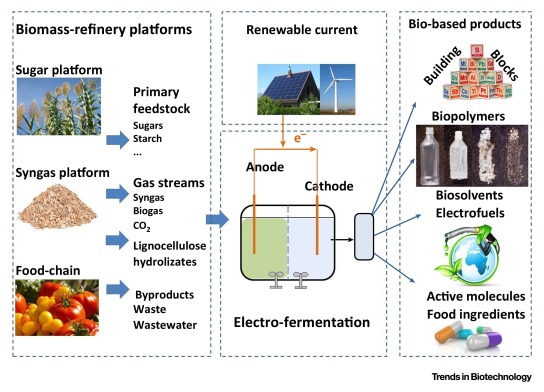
Schievano et al. 2016. Technical stuff from the paper as an fyi for those interested. "The Role of EF in Biorefineries. Electrochemically induced microbial processes could broaden the possible range of fermentation substrates (including waste organic matter), optimizing traditional industrial fermentation processes, reducing chemical addition for process control (e.g., pH, redox regulation, antifoaming agents, etc.), steering continuous product separation through membranes, and widening the range of high-value compounds that can be produced. By improving metabolic pathways by electrochemical control, non-sterile microbiota-based fermentations could be more easily influenced to handle complex/impure organic substrates (such as waste-streams), where PMCs would fail, especially in commercial-scale applications. A significant step forward would be achieved when PMCs or microbiota, under electrode-induced reductive or oxidative conditions, could transform the wide variety of soluble organic compounds available as byproducts of food-chain, biomass refineries (side-products, waste, and wastewaters) and/or gaseous streams such as syngas (from biomass), fermentative gases (i.e., H2 + CO2, biogas) and industrial flue emissions."
Italian food break!
Laura Rago is also a former student from the laboratory at ASU Biodesign Institute in the Swette Center for Environmental Biotechnology (the same facility I conducted my research). She is looking at ways to increase current production in MxCs using real wastewater containing cheese whey. She is also interested in observing how high pH conditions impact current production.
Alessandra Colombo showed me a reactor that contained photosynthetic microalgae. These reactors are related to earlier studies conducted by the group that were looking to decrease the cost of treating dairy manure by coupling treatment of the manure slurry with the growth of microalgae. The idea is to use microalgae to produce biofuels and other useful products using manure slurry.
Andrea Goglio’s work space is in a separate room that is described as ‘the mosquito’ lab. Andrea’s experiments are using MxCs to monitor COD levels in real wastewater. Since his reactors are sitting in a large vat of wastewater, naturally it attracts mosquitos and has become a breeding ground!
Anna Corsini is in a different lab and thus her research is a little different than the rest. Anna is not working with MxCs, but is instead interested in the relationship of microbial communities with the mobilization of heavy metals, including arsenic, in soil. She is investigating how certain species of bacteria affect the oxidation of state of arsenic. If bacteria make arsenic soluble, this becomes an issue since it makes it more difficult to remove arsenic from contaminated water.
Laura and I gave presentations about MxCs to other students on campus. Laura first introduced MxC research in Milano and then I gave a presentation about how MxCs are being used around the world.
After the presentation- we all ordered real Italian espresso shots!
Just down the street is the University of Milano-Bicocca where Matteo Daghio is also using MxCs to monitor COD levels in wastewater. In addition, Matteo is interested in using MxC technology to degrade BTEX (benzene, toluene, ethylbenzene and xylene) in contaminated water sources. These contaminants are often the product of large oil spills andfracking since these compounds are found in crude oil, natural gas, and petroleum deposits. BTEX compounds are of concern since chronic exposure can result in neurological impairments and leukemia.
After visiting Matteo’s lab, we visited the Leonardo da Vinci Museum of Science and Technology during the European Night of Research to attend an event called Science Speed Dating (sponsored by Fondazion Cariplo ti cambia la vita). The European Night of Research was an event held at the Museum in order to encourage the public to interact with and learn about scientific and technological innovations occurring in Milan. It included interactive exhibits where children got to work with microscopes to observe microorganisms and work with faux food to assemble a complete balanced meal, etc… The main reason we were there was for Science Speed Dating. The way this event worked is that scientists were sitting in chairs in a line. People from the public were free to walk up to any scientists and ask her or him about their research. If people from the public could not come up with questions, many of the scientists had grab bags full of random questions which they could ask the scientist. This event garnered a lot of audience participation and was an excellent method to get the public communicating with the scientists that conduct the research for which their tax dollars pay.
Le Mani Sapienti houses the World’s Largest Violin. Listen a piano piece live from Milano!
While in Milan, I visited the Fondazione Prada Art Museum. The primary reason for my visit was to see the café at the museum named Bar Luce. I usually do not care about fancy designer cafes; however, this one was designed by film director Wes Anderson. Wes Anderson has directed some of my favorite films including the Royal Tenenbaums (2001), The Life Aquatic with Steve Zissou (2004),Fantastic Mr. Fox (2009), Moonrise Kingdom (2012), Grand Budapest Hotel (2014). If you are a fan of Wes Anderson, you may know that he has a knack for simplicity and complete symmetry- Bar Luce did not disappoint!
I came back to the Fondazione Prada Art Museum the following day since I was absolutely intrigued by the exhibits they had on display. I have included some works for which I am particularly fond below. I also have included links for you to learn more about the artists at your leisure. Rather than interpret the art, I will simply put the pieces here and leave the interpretation to you.
Edward Kienholz: the only piece by Kienholz for which I was given an explanation is “The Merry-Go-World or Begat By Chance and the Wonder Horse Trigger.” This is an interactive piece which allows members of the public to enter after spinning a wheel (like Wheel of Fortune). After spinning the wheel, you enter a room in the center of the Merry-Go-World that is pitch-black. After a few moments, a random section of the inside illuminates to display materials from a certain region in the world. All of the sections are very different- some show impoverished villages in Africa, some show bourgeois apartments in France, etc… The point of the exhibit is that the fate that each member sees is completely random and has nothing to do with his or her history. In other words, the fate of a large part of our lives in completely determined by the random location on the planet in which we are born. For me, the ride malfunctioned and nothing lit up… three times. That’s right; three times in a row I had no fate. Eventually, I ended up as a gilded Parisian.
Thomas Demand: This photographer never releases and art piece of a photo he has taken of the ‘real world’. All of his compositions consist of photographs he has taken of a model he has produced for the sake of making a simulated reality. Here, Demand has used a 3D printer to reconstruct a grotto based on several hundred pictures he has taken and collected over the years.
The Palazzo Reale also had an exhibit on MC Escher. Look at the pictures below and you’ll know exactly who I am talking about:
0 Comments
Leave a Reply. |
Science /ˈsīəns/
|

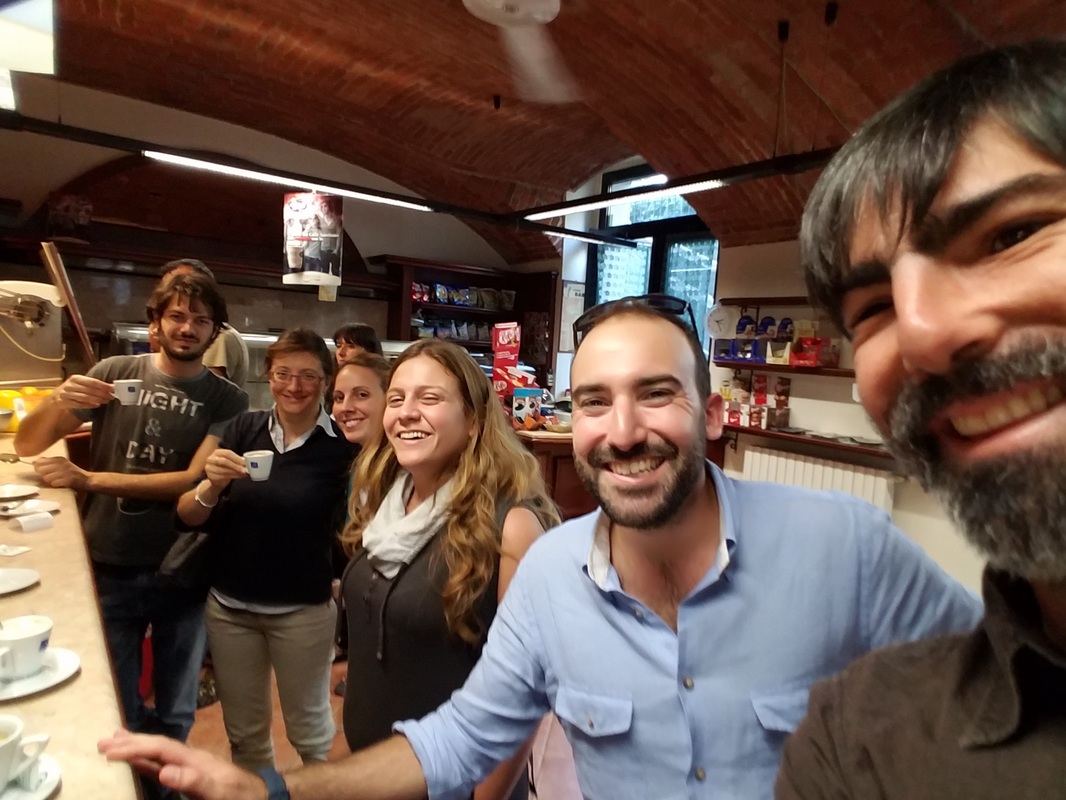
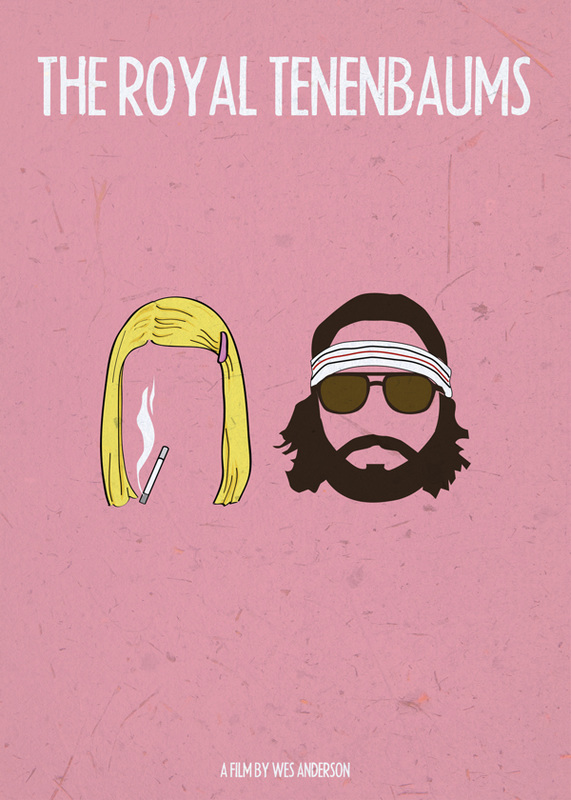




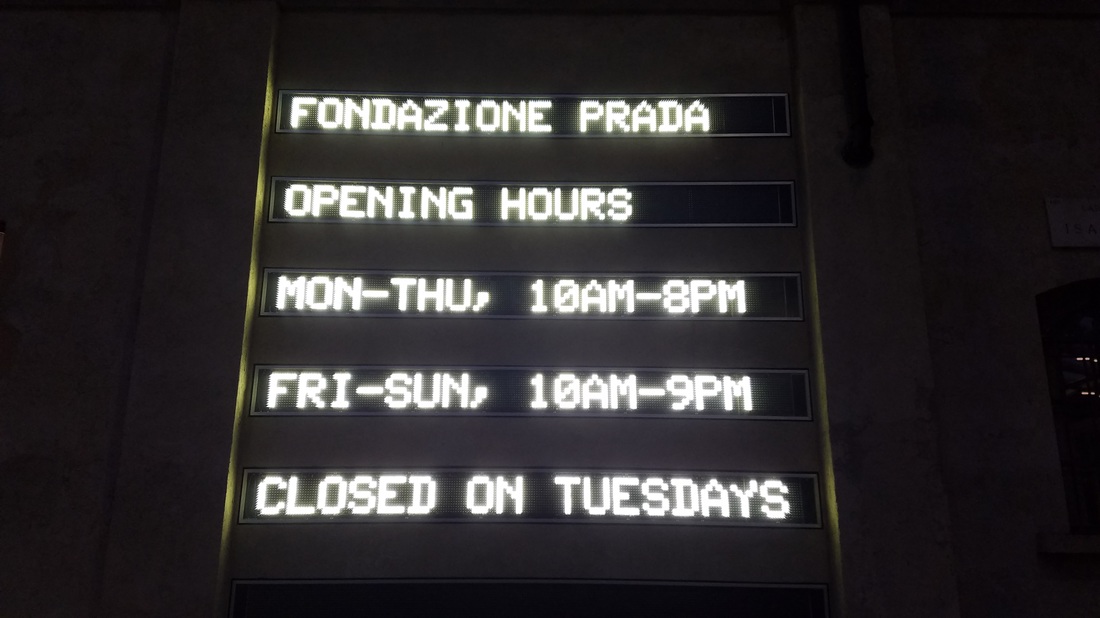
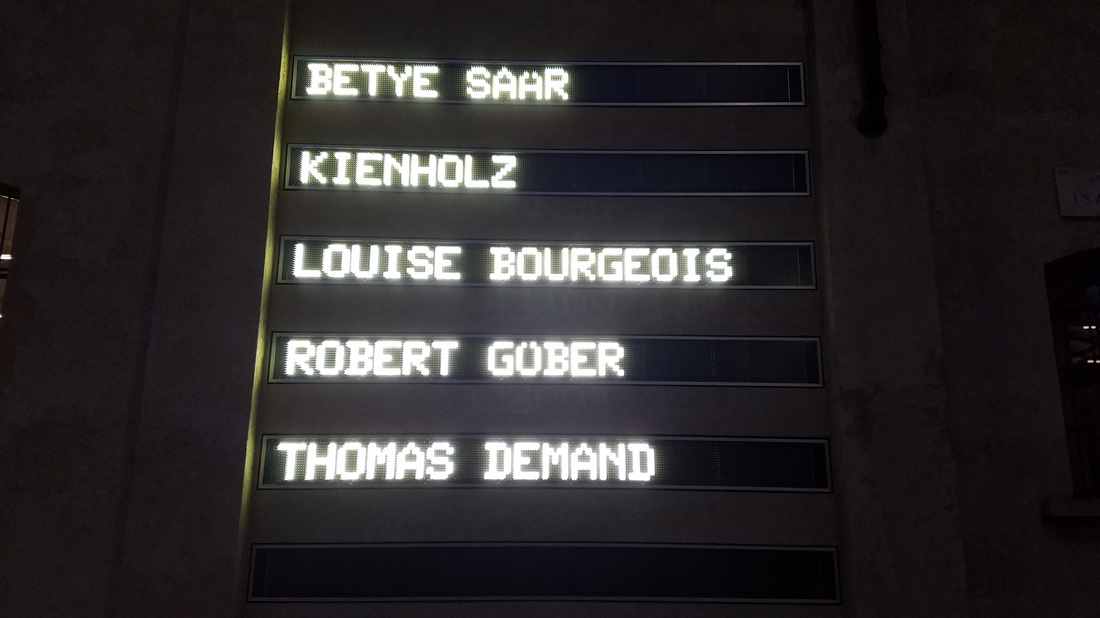
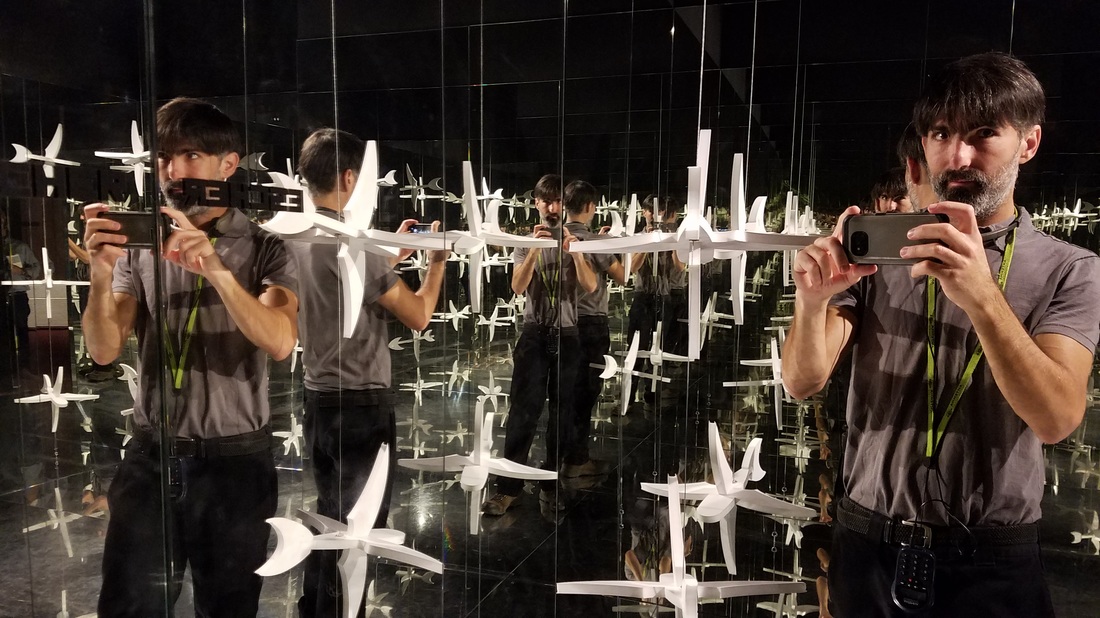
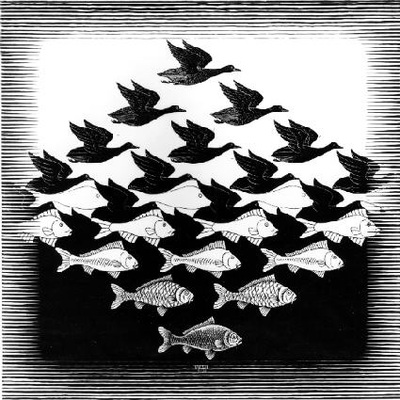
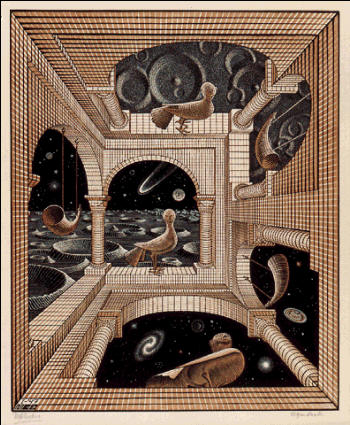
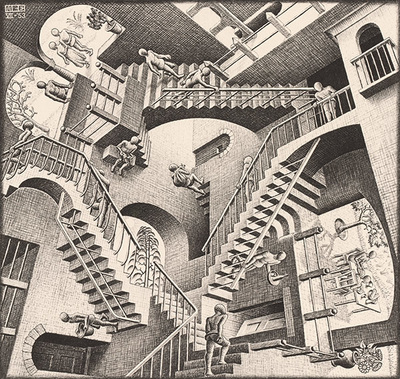
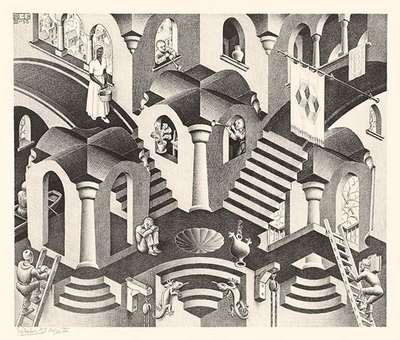
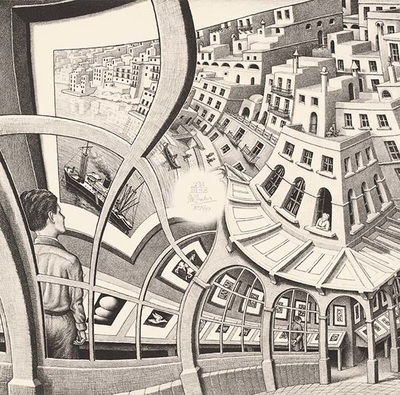
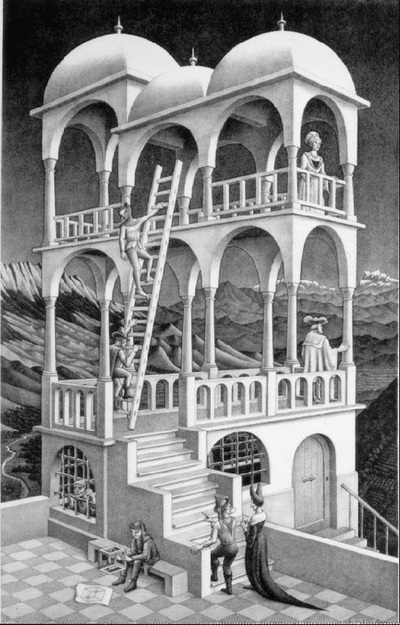
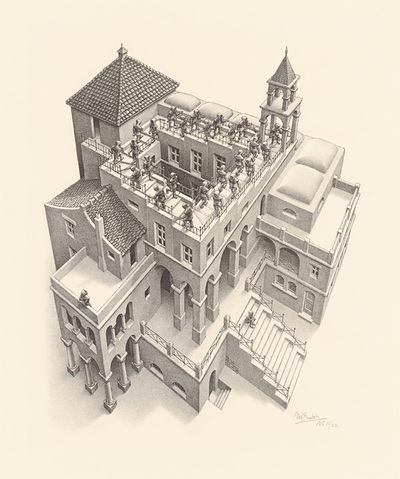
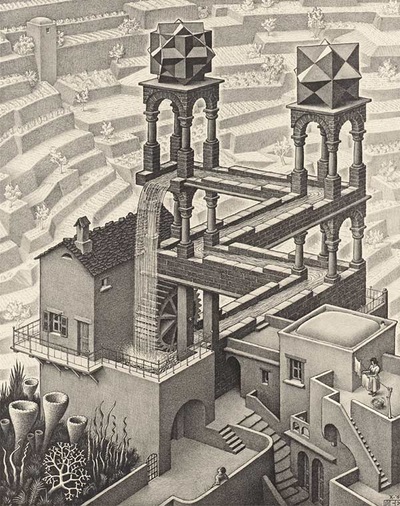
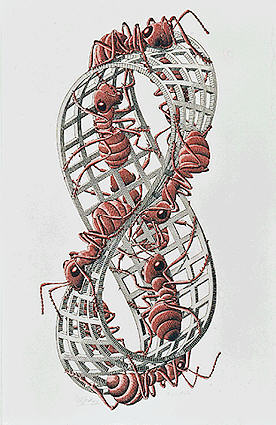
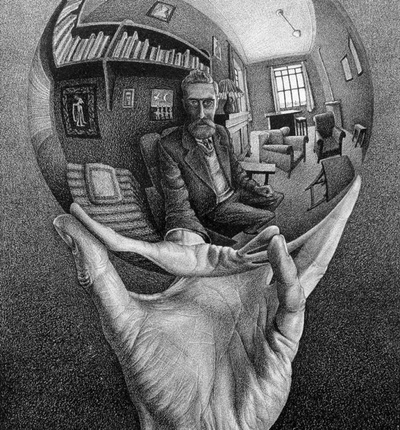
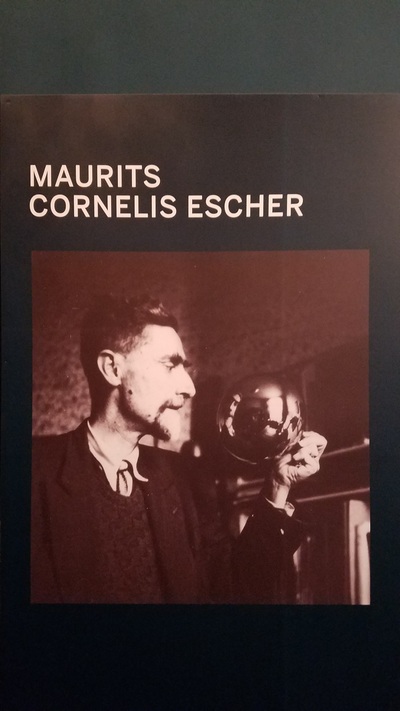


 RSS Feed
RSS Feed